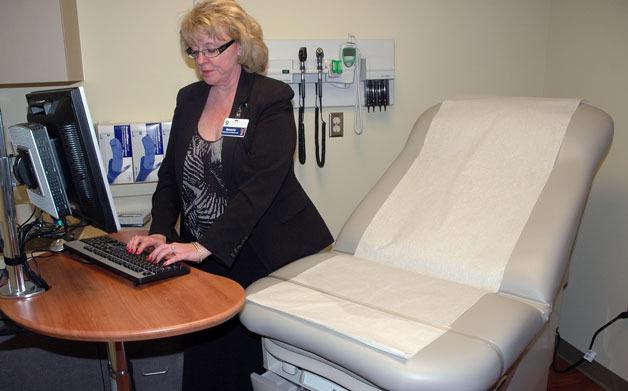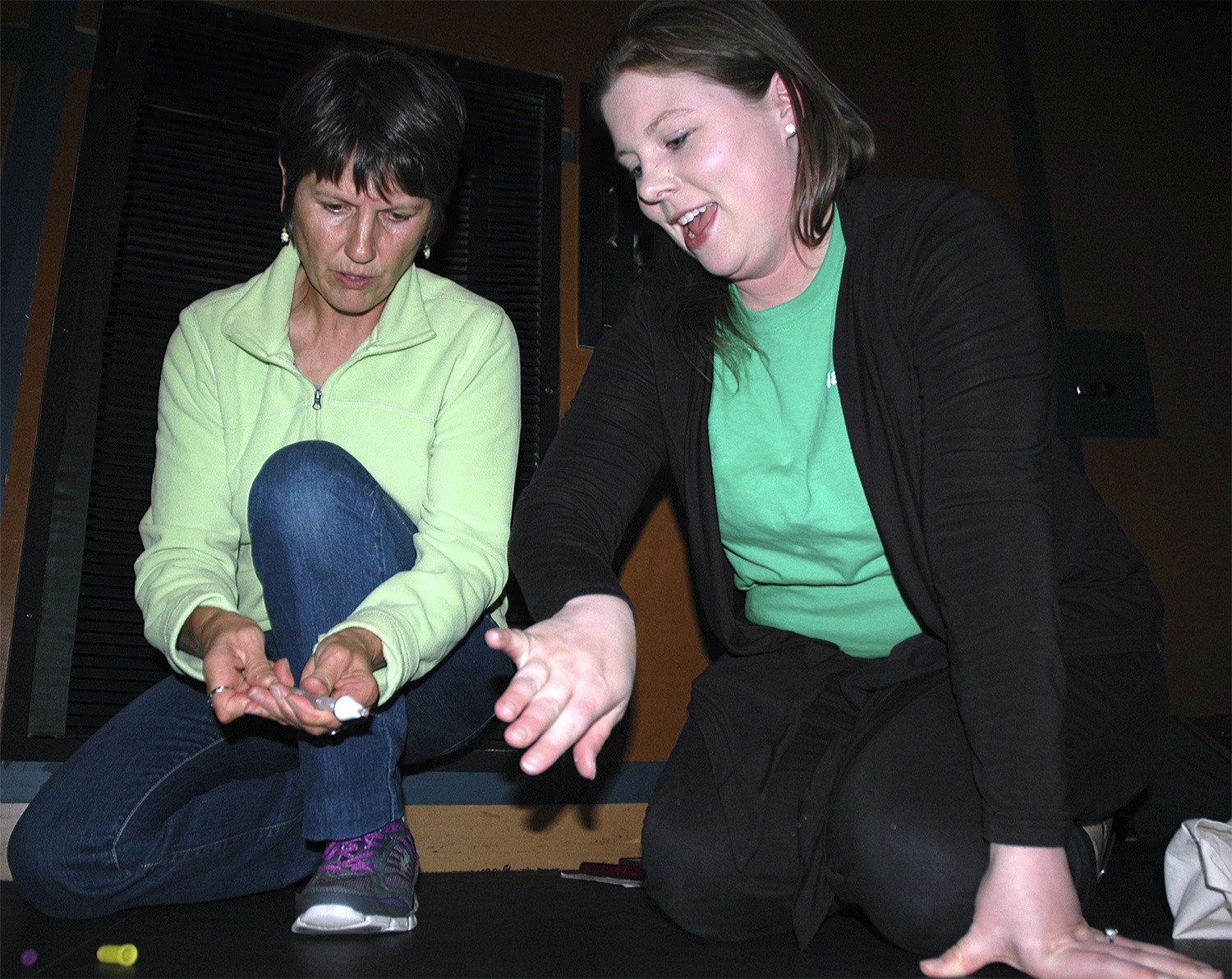SMOKEY POINT — The longtime collaboration between the Cascade Valley Hospital and Clinics in Arlington and the Skagit Valley Hospital in Mount Vernon is now set is stone, literally, with the opening of the Cascade Skagit Health Alliance, a 42,000-square-foot multi-specialty medical facility in Smokey Point.
The facility opened to patients on March 26, but not before a VIP open house on March 22, which offered guided tours of the two-story building’s host of unique features.
Clark Jones, administrator of the Cascade Valley Hospital and Clinics, was joined by Dr. Tim Cavanaugh, the board chair for Cascade Valley, as well as Gregg Davidson, CEO of the Skagit Valley Hospital, and Jim Hobbs, Skagit Valley’s longest serving commissioner, in celebrating the opening of the facility, on time and $1 million under budget.
“We’d originally projected a total cost of $12.5 million, but we’re now looking at $11.5 million,” said Jones, who credited these savings to Botesch, Nash & Hall Architects and Synergy Construction.
This investment has given the Cascade Skagit Health Alliance 58 examination rooms and four procedure rooms in primary care, 10 examination rooms and two procedure rooms in urgent care, a short-bore MRI and a digital X-ray, for a starting crew of 14 primary care and three urgent care physicians to practice family, internal and occupational medicine, as well as pediatrics and women’s health, with full lab services. The facility will even host three oncologists and a rotating trio of specialists in not only oncology, but also cardiology and plastic and reconstructive surgery.
“We’re expanding primary and urgent care from our current hours, moving our cancer care from the hospital and bringing specialists to the area who weren’t previously available,” Jones said. “And this is just the start. We’ll be adding more personnel as time goes on.”
“This is an excellent example of the very successful collaboration between our two hospitals,” Hobbs said. “We’re working together to better meet the needs of our patients. It’s the hospitals that will rise to the challenge of new healthcare demands that will survive.”
Beverly Jacobs, the on-site director of operations, showed off the facility’s “healthways” of patient rooms with electronically adjustable patient beds and movable computer terminals with which they and their healthcare providers can access their fully digital medical records.
“The beds are wider than industry standard, and you can raise the back up and down, so you don’t have to step up on it,” Jacobs said. “We even have buffer screens in the doorjambs, so that people outside can’t see through the crack of the door when it’s being opened or closed.”
To further facilitate patient care, in part by encouraging healthcare providers to stay on their feet, none of the healthcare providers at the Cascade Skagit Health Alliance have their own offices. Instead, they all work from a long hallway of computer terminals, that also allows them greater freedom of movement between the “healthways” of patient rooms.
“We also made sure the call center was separate from the front desk, so that those who called in would have privacy while reception staff would be able to focus fully on the people standing in front of them.”
“It’s gratifying when an idea can become a reality like this,” Davidson said. “We’re improving access to healthcare for the region, in a healing environment that looks less institutional, through the use of stone and wood and other natural elements, to help create the best experience possible for patients.”
Cavanaugh compared the opening of the Cascade Skagit Health Alliance to his recent climb up Mount Kilimanjaro, when he reached a plateau near the top and realized that his hike to the top was not yet done.
“We’ve still got a ways to go,” Cavanaugh said. “But it’s worth the climb.”








